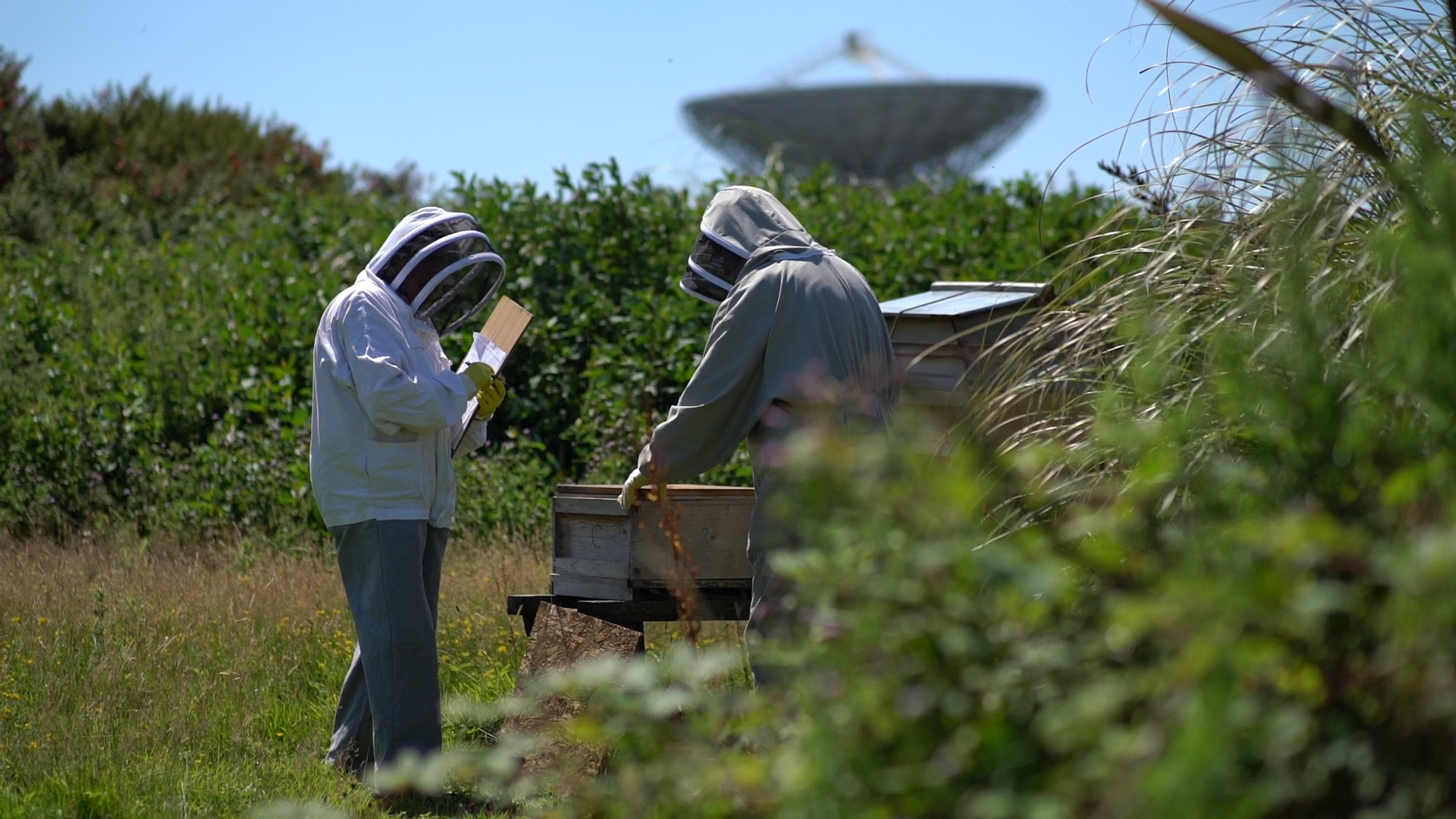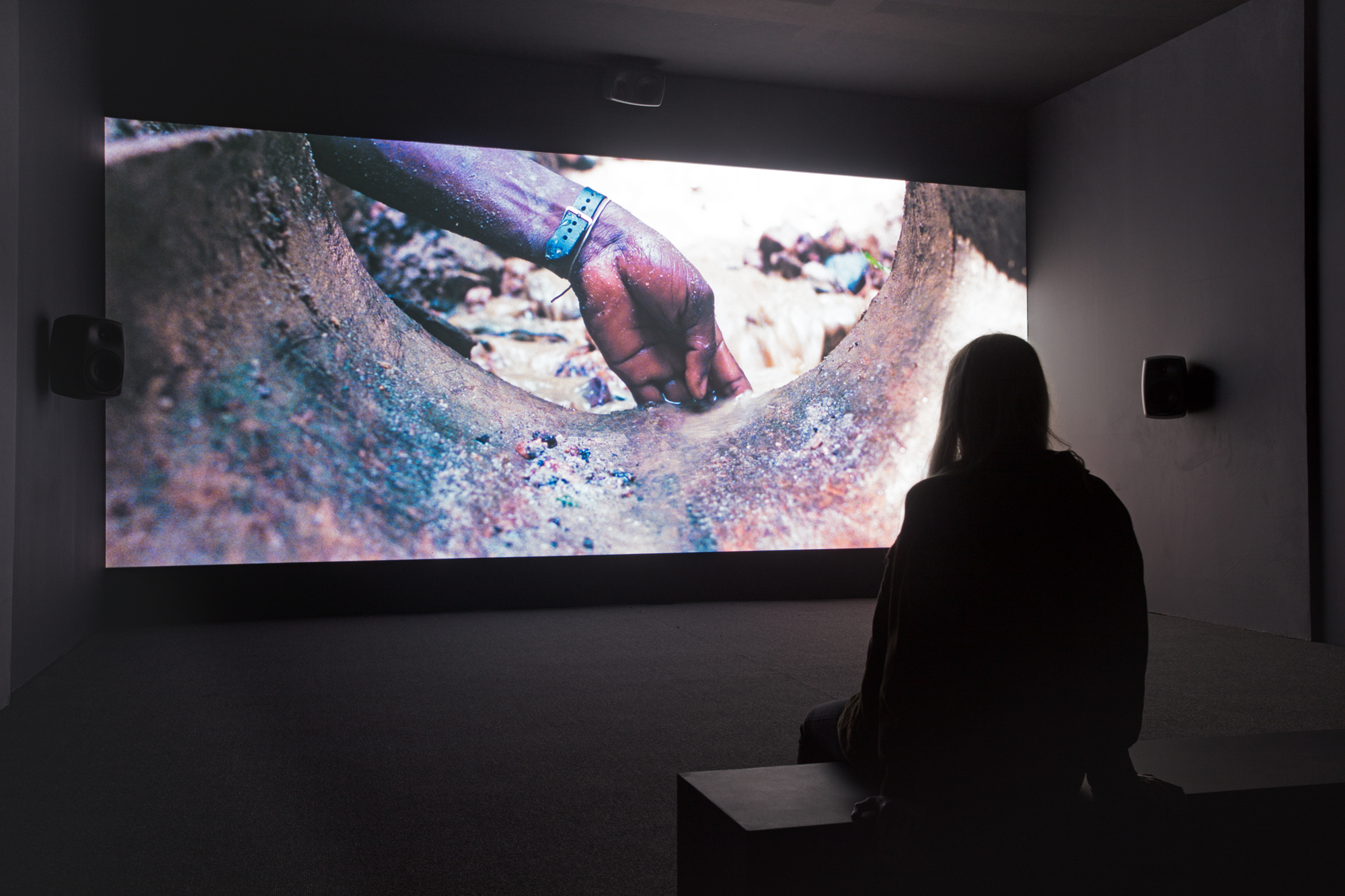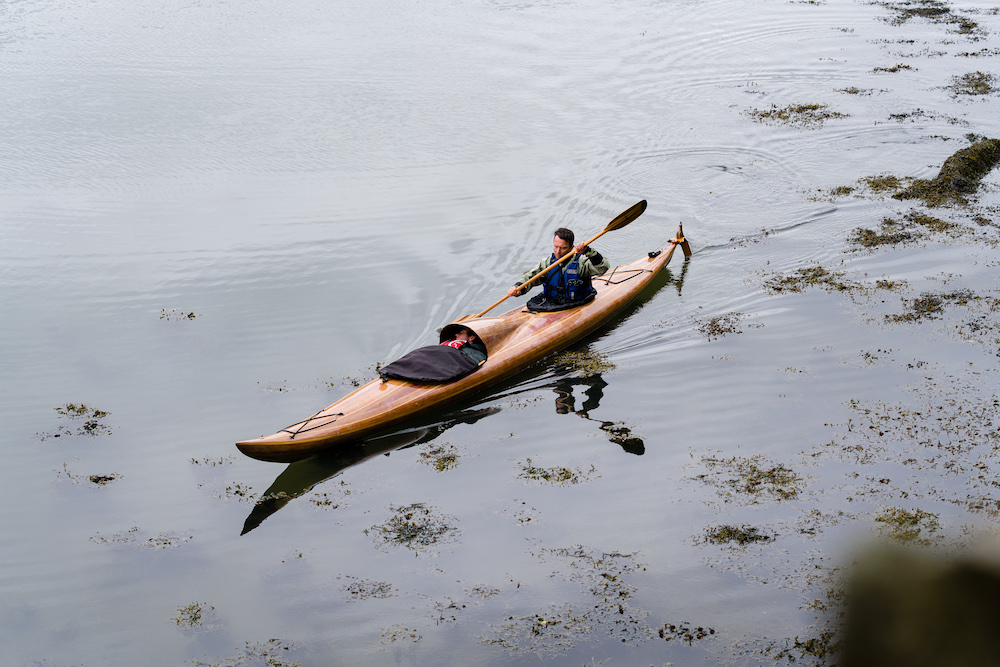
On my arrival in West Cornwall, I’m continually told how lucky I am that the sun is shining. The area hasn’t been blessed with the same erratic heat wave as London, and as a result everywhere is abundantly green and everyone seems to be enjoying celebratory walks. This is particularly true in Godolphin, a beautiful National Trust property nestled within medieval gardens and approached through a woodland populated by an abundance of bluebells. It is the unlikely first stop on my tour of Groundwork, a festival of international contemporary art organized by CAST (Cornubian Arts & Science Trust) and held in various spaces throughout Helston, Penzance, Falmouth and beyond.
Past the house’s impressive stone façade lies Christina Mackie’s painstakingly erected installation The Judges II, which features a selection of trestle tables covered in watercolours, drawings, ceramics, TVs, minerals and piles of dust. Somewhat surprisingly, this contemporary invasion into a historic hall (complete with ostentations fireplace and a grand old dining table) seems at home. The soft palette of Mackie’s paintings and sketches complement the interior woodwork, and her various rock formations are presented as if they are the carefully catalogued finds from a recent on-site excavation. The artist refers to the work as “a metaphysical space, peopled, full of furniture, personal stories and locations, which I use as a fuel cell to generate new meaning for myself.” No wonder it seems fitting in a heritage property, where visitors come to marvel at local history.

Mackie’s own interest in geology and extinction, which manifests itself in various ways in this piece, hold further resonance in this location. The Godolphins were a hugely influential mining family, who helped build West Cornwall into an area of vital industry that powered the Industrial Revolution. This connection to the physical properties of the land is one of the fundamental building blocks that pull the Groundwork programme together, along with the important social history that is inextricably linked to it. “It really is all about place,” says Josie Cockram, Groundwork coordinator. “It’s about creating connections and conversations around the incredible expertise and local knowledge that exists in Cornwall and finding new ways to relate to that.”
“This mix of documentation, featuring workers sifting through silt and robots processing material in pristine laboratories, couldn’t seem further from life in rural Cornwall”
An impressive collection of talks and workshops have taken place at the CAST headquarters in Helston, as a way of bringing the community together and making contemporary art more relatable. According to Cockram, CAST is a place for conversation as opposed to a static exhibition venue. That being said, it is currently hosting Steve McQueen’s stunning film Gravesend, which investigates the mining of coltan (a mineral vital for smartphone and laptop components) along the Congo River. This mix of documentation, featuring workers sifting through silt and robots processing material in pristine laboratories, couldn’t seem further from life in rural Cornwall, but connections can be drawn with the area’s historic industry. In an effort to make the similarities more widely known, Frances Wall, professor of applied mineralogy at the nearby Camborne School of Mines, recently presented a talk hooked to McQueen’s film, attracting an audience who might never even consider entering an art gallery.

CAST’s reclamation of the town’s old school building could easily have been a point of contention for the organization, but a lot of initial suspicion has been replaced by a genuine interest, as old students have been invited to share their memories and have a tour of the in-process renovations. It is also home to a handful of capacious artist studios, something that is still a premium beyond the compact and more costly enterprises found in St Ives and other more established cultural hotspots.
Just down the road, in Helston Museum, Sean Lynch has installed two video works that seem made for the realms of traditional social history and domestic displays. His first piece, Latoon, installed behind a mill stone, features an interview with Irish folklorist Eddie Lenihan, who relays his own journey in preventing the destruction of a whitethorn bush, apparently known as a meeting place for warring, mischievous fairies. Lynch’s second screening, What Is an Apparatus, can be viewed behind traditional school desks, which are part of the usual museum installation. The film is a bizarre mix of anecdotal stories and local myths interspersed with foreboding tales of the horrors that come with a technological dependent existence. Both these pieces are somewhat quizzical and often humorous, but they are rooted in the kind of storytelling that is both compelling and vital in a place that is so rich in local word-of-mouth history. They seem much more suited to this environment than any white cube.
“Simon Starling’s alluring chronology of the quest to chart the Transit of Venus was made several years ago but couldn’t be better suited to this strange space”
The idiosyncrasies of Helston Museum are, however, nothing in comparison to the Goonhilly Earth Station. This incredible development is home to several colossal satellites and is the oldest of its kind in England. The first antenna, named Arthur, was built in 1962 in order to receive and transmit Telstar communications. The site is usually closed to the public, so Groundwork’s film installations are a fantastic excuse to get close to this monstrous technology.
The first is a new commission by artist duo Semiconductor and explores the Goonhilly site (including testimonies from when it was first built), while interspersing it with complex scientific data acquired through radio astronomy. Meanwhile, Simon Starling’s alluring chronology of the quest to chart the Transit of Venus was made several years ago but couldn’t be better suited to this strange space. At times the sheer magnetism of his aesthetic is in danger of derailing the central story, which marries the history of photography, film and astronomy through the lens of an international quest to record the moment Venus crosses the path of the sun. Under the shadow of the almighty Arthur, the sheer power of technological advances that began in such primitive guises centuries ago, seem truly present.

Groundwork also makes as much of a connection with the water as it does the land and stars. Adam Chodzko has continued Ghost, his ongoing work traversing England’s waterways in a hand-made kayak, which included special passenger trips on Gillan Creek on the Lizard Peninsula on the opening weekend. Rosemary Lee will also present a performance piece on Par Beach in a few weeks, featuring thirty women marking out the turn of the tide with their bodies. It is one of the second wave of programming (new pieces will be installed by Tacita Dean, Francis Alÿs and Janet Cardiff in June) that includes venues such as the Telegraph Museum, nestled near the coast in Porthcurno. Steve Rowell has spent several years documenting the various sites of telecommunication around the world and has traced the now defunct mid-nineteenth century cables that ran under the sea from Land’s End to Newfoundland. His photographic findings are presented at the museum alongside the forms of innovation that have since been usurped by the internet.
“Outsiders might argue that a changing agenda that reforms halfway through the run is cumbersome for out-of-town visitors”
With such a dense collection of programming—not including the numerous “field trips” that make use of native knowledge ranging from botany to witchcraft—Groundwork is staying true to its name by laying a foundation of contemporary art that fosters a real connection with the immediate world that surrounds it. Outsiders might argue that a changing agenda that reforms halfway through the run is cumbersome for out-of-town visitors (not to mention journalists) but it is also an active way of maintaining interest within a more local framework and makes the best possible use of available sites and infrastructure. It is also an excellent excuse to pay a second visit, especially if the sunshine stays put.
Win a stay at the Trelowarren estate on the Lizard in Cornwall, and tickets to see Steve McQueen in conversation with Nicholas Serota––a special event in the Groundwork programme, over the weekend 1-3 June. Enter via the website before 5pm on 27 May.
VISIT WEBSITE




